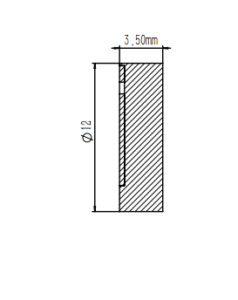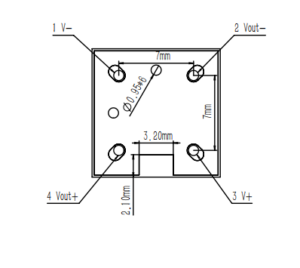$4.00
| Pressure range | 10, 20, 30, 40, 50 bar | Size mm
(diaphragm* height) |
12*12 mm |
| Product model | XDB101-5 | Supply voltage | 0-30 VDC (max) |
| Bridge road impedance | 10 KQ±30% | Full range output | ≥2 mV/V |
| Operating temperature | -40~+135℃ | Storage temperature | -50~+150 ℃ |
| Compensation temperature | -20~80℃ | Temperature drift
(zero & sensitivity) |
≤±0.03% FS/℃ |
| Long-term stability | ≤±0.2% FS/year | Repeatability | ≤±0.2% FS |
| Zero offset | ≤±0.2 mV/V | Insulation resistance | ≥2 KV |
| Zero-point long-term stability @20°C | ±0.25% FS | Relative humidity | 0~99% |
| Direct contact with liquid materials | 96% Al2O3 | Overall accuracy
(linear + hysteresis) |
≤±0.3% FS |
| Burst pressure | ≥2 times range (by range) | Overload pressure | 150%FS |
| Sensor weight | 12g | ||


Subscribe to our newsletter now

+86-19921910756
12th Floor, Santai Building, 137-139 Connaught Road Central, Hong Kong
Mail: info@xdbsensor.com
Copyright © xidibei.com all rights reserved.
| DC5V | DC12V | DC9~36(24)V | DC3.3V |
|---|---|---|---|
| 0.5~4.5V, 1~5V, 0.4-2.4V | 4-20mA, 0-10V, 0.5-4.5V 0-5V, 1-5V | 4-20mA, 0-10V, 0.5-4.5V 0-5V, 1-5V | 0.4~2.4V, I2C |
From a physical perspective, the potential difference that electronic components can achieve when working is limited by the supply voltage. If you try to generate an output signal greater than the supply voltage, it is like asking a container to hold more liquid than its capacity, which is physically impossible.
From the perspective of circuit principles, the supply voltage provides energy and working conditions for each component in the circuit. When trying to generate a signal higher than the supply voltage, the transistors, amplifiers and other components in the circuit cannot provide sufficient gain or energy conversion, and thus such an output cannot be achieved.
In addition, from the perspective of signal integrity and stability, an output signal that exceeds the supply voltage will cause signal distortion, increase noise, and may even damage components in the circuit, affecting the normal operation of the entire system.